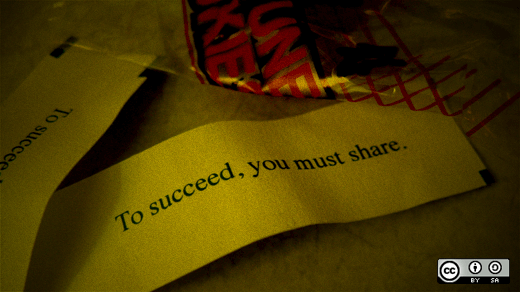After many years of practicing marketing in the B2B tech world, I think I've heard just about every misconception that engineers seem to have about marketers. Here are some of the more common:
- "Marketing is a waste of money that we should be putting into actual product development."
- "Those marketers just throw stuff against the wall and hope it sticks. Where's the discipline?"
- "Does anyone actually read this stuff?"
- "The best thing a marketer can tell me is how to unsubscribe, unfollow, and unfriend."
And here's my personal favorite:
"Marketing is all fluff."
That last one is simply incorrect—but more than that, It's actually a major impediment to innovation in our organizations today.
Let me explain why.
Seeing my own reflection
I think these comments from engineers bother me so much because I see a bit of my former self in them.
You see, I was once as geeky as they come—and was proud of it. I hold a Bachelor's in electrical engineering from Rensselaer Polytechnic Institute, and began my professional career as an officer in the US Air Force during Desert Storm. There, I was in charge of developing and deploying a near real-time intelligence system that correlated several sources of data to create a picture of the battlefield.
After I left the Air Force, I planned to pursue a doctorate from MIT. But my Colonel convinced me to take a look at their business school. "Are you really going to be in a lab?" he asked me. "Are you going to teach at a university? Jackie, you are gifted at orchestrating complex activities. I think you really need to look at MIT Sloan."
So I took his advice, believing I could still enroll in a few tech courses at MIT. Taking a marketing course, however, would certainly have been a step too far—a total waste of time. I continued to bring my analytical skills to bear on any problem put in front of me.
Soon after, I became a management consultant at The Boston Consulting Group. Throughout my six years there, I consistently heard the same feedback: "Jackie, you're not visionary enough. You're not thinking outside the box. You assume your analysis is going to point you to the answer."
And of course, I agreed with them—because that's the way the world works, isn't it? What I realize now (and wish I'd discovered out far earlier) is that by taking this approach I was missing something pivotal: the open mind, the art, the emotion—the human and creative elements.
All this became much more apparent when I joined Delta Air Lines soon after September 11, 2001, and was asked to help lead consumer marketing. Marketing definitely wasn't my thing, but I was willing to help however they needed me to.
But suddenly, my rulebook for achieving familiar results was turned upside down. Thousands of people (both inside and outside the airline) were involved in this problem. Emotions were running high. I was facing problems that required different kinds of solutions, answers I couldn't reach simply by crunching numbers.
That's when I learned—and quickly, because we had much work to do if we were going to pull Delta back up to where it deserved to be—that marketing can be as much a strategic, problem-oriented and user-centered function as engineering is, even if these two camps don't immediately recognize it.
Two cultures
That "great divide" between engineering and marketing is deep indeed—so entrenched that it resembles what C.P. Snow once called the "two cultures" problem. Scientifically minded engineers and artistically minded marketers tend to speak different languages, and they're acculturated to believe they value divergent things.
But the fact is that they're more similar than they might think. A recent study from the University of Washington (co-sponsored by Microsoft, Google, and the National Science Foundation) identified "what makes a great software engineer," and (not surprisingly) the list of characteristics sounds like it could apply to great marketers, too. For example, the authors list traits like:
- Passion
- Open-mindedness
- Curiosity
- Cultivation of craft
- Ability to handle complexity
And these are just a few! Of course, not every characteristic on the list applies to marketers—but the Venn diagram connecting these "two cultures" is tighter than I believe most of us think. Both are striving to solve complex user and/or customer challenges. They just take a different approach to doing it.
Reading this list got me thinking: What if these two personalities understood each other just a little bit more? Would there be power in that?
You bet. I've seen it firsthand at Red Hat, where I'm surrounded by people I'd have quickly dismissed as "crazy creatives" during my early days. And I'd be willing to bet that a marketer has (at one time or another) looked at an engineer and thought, "Look at this data nerd. Can't see the forest beyond the trees."
I now understand the power of having both perspectives in the same room. And in reality, engineers and marketers are both working at the intersection of customers, creativity, and analytics. And if they could just learn to recognize the ways their personalities compliment each other, we could see tremendously positive results—results far more surprising and innovative than we'd see if we kept them isolated from one another.
Listening to the crazies (and the nerds)
Case in point: The Open Organization.
In my role at Red Hat I spent much of my day thinking about how to extend and amplify our brand—but never in a million years would I have thought to do it by asking our CEO to write a book. That idea came from a cross-functional team of those "crazy creatives," a group of people I rely on to help me imagine new and innovative solutions to branding challenges.
When I heard the idea, I recognized it right away as a quintessentially Red Hat approach to our work: something that would be valuable to a community of practitioners, and something that helps spread the message of openness just a little farther. By prioritizing these two goals above all others, we'd reinforce Red Hat's position as a positive force in the open source world, a trusted expert ready to help customers navigate the turbulence of digital disruption.
Here's the clincher: That's exactly the same spirit guiding Red Hat engineers tackling problems of code. The group of Red Hatters urging me to help make The Open Organization a reality demonstrated one of the very same motivations as the programmers that make up our internal and external communities: a desire to share.
In the end, bringing The Open Organization to life required help from across the spectrum of skills—both the intensely analytic and the beautifully artistic. Everyone pitched in. The project only cemented my belief that engineers and marketers are more alike than different.
But it also reinforced something else: The realization that openness shows no bias, no preference for a culture of engineering or a culture of marketing. The idea of a more open world can inspire them both equally, and the passion it ignites ripples across the artificial boundaries we draw around our groups.
That hardly sounds like fluff to me.
This article is part of The Open Organization Guide to IT culture change.






Comments are closed.